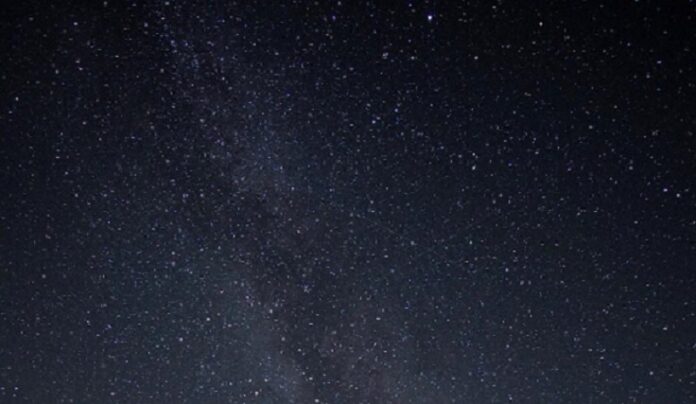Observation of 26 cm radio signals, formed due to hyperfine transition of cosmic hydrogen offer an alternative tool to the study of early svemir. As for neutral epoch of the infant svemir when no light was emitted, 26 cm lines are perhaps only window. However, these redshifted radio signals emitted by cosmic hydrogen in the early svemir are extremely feeble and have been elusive so far. In 2018, EDGE experiment reported detection of 26 cm signals but the findings could not be independently confirmed. The main issue was instrument systematic and contamination with the other signals from the sky. The REACH Experiment is to employ unique methodology to overcome the bottleneck. It is hoped that this research group will reliably be able to detect these elusive signals in near future. If successful, REACH Experiment may bring ‘26 cm radio astronomy’ to the forefront in the study of early svemir and help us much in unravelling the mysteries of early svemir.
When it comes to the study of rani svemir, name of recently launched Svemirski teleskop James Webb (JWST) pops up in our mind. JWST, a successor of hugely successful Hubble telescope, is a space-based, infrared observatory equipped to capture optical/infrared signals from the early stars and galaxies formed in the Svemir soon after the Big Bang1. Međutim, JWST has some limitation so far as picking up signals from the neutral epoch of rani svemir je zabrinut.
Table: Epochs in the history of svemir since the Big Bang

(Izvor: Filozofija kozmologije – pozadina 21 cm. Dostupno na http://philosophy-of-cosmology.ox.ac.uk/images/21-cm-background.jpg)
Up to 380 k years after the big bang, the svemir was filled with ionised gas and was fully opaque. Between 380k – 400 million years, the svemir had become neutral and transparent. The epoch of reionisation started after this phase starting 400 million after the big bang.
During the neutral epoch of early svemir, kada svemir was filled with neutral gases and was transparent, no optical signal was emitted (hence called dark age). Unionized material does not emit light. This poses a challenge in study of early Svemir of neutral epoch. However, microwave radiation of 21 cm wavelength (corresponding to 1420 MHz) emitted by the cold, neutral cosmic hydrogen during this epoch as a result of hyperfine transition (from parallel spin to more stable anti-parallel spin) offers opportunities to researchers. This 21 cm microwave radiation would be redshifted upon reaching Earth and will be observed at 200MHz to 10 MHz frequencies as radio waves2,3.
21 cm radioastronomija: Observation of 21-centimeter cosmic hydrogen signals offers an alternative approach to the study of early svemir especially of neutral epoch phase that was devoid of any light emission. This can also inform us about new physics such as distribution of matter over time, dark energy, dark matter, neutrino masses, and inflation2.
However, the 21-cm signals emitted by the cosmic hydrogen during early svemir phase is elusive. It is expected to be extremely weak (about one hundred thousand times weaker than other radio signals also emanating from the sky). As a result, this approach is still in infancy.
Godine 2018. istraživači su izvijestili o detekciji takvog radijskog signala na frekvenciji od 78 MHz čiji je profil bio uvelike u skladu s očekivanjima za signal od 21 centimetra koji emitira prvobitni kozmički vodik4. Ali ovo otkrivanje primordijalnog 21-cm radio signala nije se moglo neovisno potvrditi stoga pouzdanost eksperimenta nije mogla biti utvrđena do sada. Čini se da je glavni problem kontaminacija radijskim signalima u prvom planu.
Posljednja prekretnica je izvješće o radio eksperimentu za analizu kozmičkog vodika (REACH) od 21. srpnja 2022. REACH će koristiti novi eksperimentalni pristup za otkrivanje ovih slabašnih, neuhvatljivih kozmičkih radiosignala i tako ponuditi novu nadu za potvrdu kozmičkih signala od 21 centimetra.
Radio eksperiment za analizu kozmičkog vodika (REACH) je eksperiment s prosječnim nebom od 21 cm. Ovo ima za cilj poboljšati opažanja upravljanjem problemima s kojima se suočavaju instrumenti koji se odnose na rezidualne sustavne signale u podacima. Fokusira se na otkrivanje i zajedničko objašnjenje sustavnosti zajedno s prednjim planom i kozmološkim signalom korištenjem Bayesove statistike. Eksperiment uključuje istodobna promatranja s dvije različite antene, ultraširokopojasnim sustavom (raspon crvenog pomaka oko 7.5 do 28) i kalibratorom prijemnika na temelju mjerenja na terenu.
This development is significant given its potential to be one of the best tools (and cost effective too vis-a-vis space-based observatories like James Webb) for study of early svemir as well as possibility of ushering in of new fundamental physics.
***
Reference:
- Prasad U., 2021. Svemirski teleskop James Webb (JWST): Prvi svemirski opservatorij posvećen proučavanju ranog svemira. Znanstveni europski. Objavljeno 6. studenog 2021. Dostupno na http://scientificeuropean.co.uk/sciences/space/james-webb-space-telescope-jwst-the-first-space-observatory-dedicated-to-the-study-of-early-universe/
- Pritchard JA i Loeb A., 2012. 21 cm kozmologija u 21. stoljeću. Izvješća o napretku u fizici 75 086901. Dostupno na https://iopscience.iop.org/article/10.1088/0034-4885/75/8/086901. Pretisak na arXiv dostupan na https://arxiv.org/abs/1109.6012 pdf verzija https://arxiv.org/pdf/1109.6012.pdf
- Sveučilište Oxford. Filozofija kozmologije – pozadina 21 cm. Dostupno u http://philosophy-of-cosmology.ox.ac.uk/21cm-background.html
- Bowman, J., Rogers, A., Monsalve, R. i sur. Apsorpcijski profil sa središtem na 78 megaherca u spektru prosječnog neba. Nature 555, 67-70 (2018). https://doi.org/10.1038/nature25792
- de Lera Acedo, E., de Villiers, DIL, Razavi-Ghods, N. et al. Radiometar REACH za otkrivanje signala vodika od 21 cm od crvenog pomaka z ≈ 7.5–28. Nat Astron (2022). https://doi.org/10.1038/s41550-022-01709-9
- Eloy de Lera Acedo 2022. Otkrivanje misterija novorođenog svemira pomoću REACH radiometra. Dostupno online na https://astronomycommunity.nature.com/posts/u
***






































